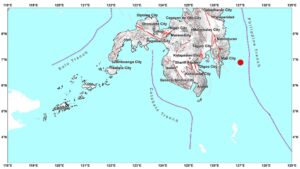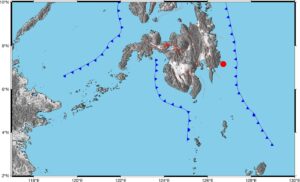THE BANGKO SENTRAL ng Pilipinas (BSP) revised its balance of payments (BoP) and current account projections for this year and 2026, as global uncertainties persist.
“The balance of payments is projected to remain in deficit over the next two years, driven by sustained pressures on the current account,” the BSP said in a statement on Wednesday.
The central bank said the overall BoP position is expected to end the year at a $6.9-billion deficit or -1.4% of gross domestic product (GDP), wider than its earlier forecast of a $6.3-billion deficit or -1.3% of GDP.
For 2026, the central bank expects the BoP deficit to widen to $3.4 billion or -0.6% of GDP from the previous projection of $2.8 billion or -0.5% of GDP.
In the first eight months, the Philippines’ BoP position swung to a $5.397-billion deficit, a reversal from the $1.592-billion surplus seen in the same period in 2024.
At the same time, the BSP now sees the current account deficit widening to $16.4 billion or -3.3% of GDP this year, from its previous projection of $16.3 billion or -3.3% of GDP.
For 2026, it expects a wider current account deficit of $15.5 billion or -2.9% of GDP from its previous projection of $13.6 billion or -2.5% of GDP.
“The current account shortfall is expected to stay at around 3% of GDP in 2025 and 2026. These reflect a widening trade-in-goods gap, subdued services receipts, and restrained capital inflows amid global uncertainty and shifting trade policies,” the BSP said.
The central bank also expects goods exports and imports to remain sluggish in the next two years, mainly due to “softening global demand, easing commodity prices, and tempered domestic growth momentum.”
Goods exports are projected to grow by 1% this year, a turnaround from the -1% decline previously expected. For 2026, goods exports are seen to expand by 1%, lower than the previous projection of 2%.
On the other hand, the BSP maintained the goods imports forecast to 1% this year but trimmed the growth projection for 2026 to 1% from 2% previously.
“Infrastructure investments, potential trade diversion, and efforts to diversify export and import partners may help cushion external shocks,” the BSP said. “However, structural constraints, such as logistical inefficiencies, skills mismatches, and elevated input costs, continue to weigh on export competitiveness.”
For services exports such as business process outsourcing (BPO) and tourism, the BSP sees slower growth for this year and next year “as the sector contends with uncertainties surrounding US reshoring policies and weakening inbound travel.”
It slashed services exports growth forecasts to 2% this year from 6% previously; and to 5% in 2026 from 8% previously.
However, the central bank retained its growth forecast for BPO revenues at 5% this year and for 2026.
The BSP cut growth projections for travel receipts this year to 1% from 10% previously. For next year, travel receipt growth is seen at 3% in 2026 from 11% previously.
For services imports, the BSP kept its 6% growth forecast for this year, but cut its 2026 forecast to 6% from 7% previously.
The BSP expects remittances to grow by 3% this year, a tad faster than its 2.8% previous forecast. It kept its forecast at 3% for 2026.
“Overseas Filipino remittances are expected to remain a resilient source of external support, underpinned by strong global labor demand and sustained confidence in formal transfer channels, despite the impending US tax on remittances,” it said.
On the other hand, foreign investment inflows may slightly soften amid “heightened global financial volatility and cautious investor behavior.”
“However, recent policy reforms — including amendments to the Investors’ Lease Act — are poised to improve the investment climate,” the BSP said.
Financial account outflows this year could hit $13.4 billion, slightly higher than the previous forecast of $12.9 billion. These outflows are expected to hit $14.4 billion next year, higher than the previous $13.2-billion forecast.
The central bank retained its forecasts for foreign direct investments (FDI) net inflows at $7.5 billion this year and $8 billion next year.
However, net inflows of foreign portfolio investments are projected to reach $6.2 billion by end-2025, slightly lower than the $6.8-billion previous projection. The BSP kept its forecast for 2026 at $5 billion.
Meanwhile, gross international reserves (GIR) are expected to hit $105 billion this year, a tad higher than the previous forecast of $104 billion. For 2026, the GIR is projected to reach $106 billion, slightly higher than the previous forecast of $105 billion.
“Gross international reserves are expected to remain adequate, providing a robust buffer against external liquidity needs even as global market conditions evolve,” the central bank said.
The BSP said it will continue to monitor emerging risks that might impact the external sector.
In a separate report, Bank of America (BofA) Global Research said the Philippines is the only country in the Association of Southeast Asian Nations (ASEAN) whose current account balance has been showing “a steady trend of wider deficits.”
“Despite the growing headwinds from external trade, current account balances across the region have remained in a manageable state, with only Philippines showing a steady trend of wider deficits, while other economies in the region remain rangebound,” it said.
In terms of goods balances, BofA identified the Philippines as an “underperformer,” alongside Malaysia.
“Within ASEAN, goods balances are the biggest driver of current account balances, with again Malaysia and Philippines being the underperformers, while Vietnam and Indonesia showing a trend of steady improvement,” it said.
Meanwhile, BofA said the Philippines’ information technology (IT) service revenues may partly offset the country’s goods deficit.
It also noted that remittances growth has lagged behind nominal growth.
“The relative importance of remittances and primary transfers in current account balances is slowly declining, as remittances growth, especially in the Philippines has consistently run behind nominal growth, and for other economies, has been mixed,” BofA said. — Katherine K. Chan


















